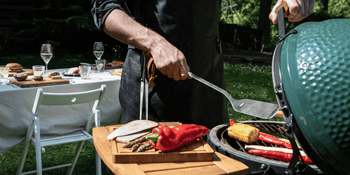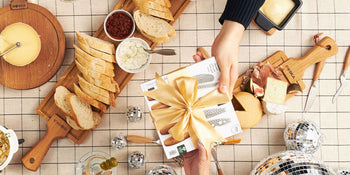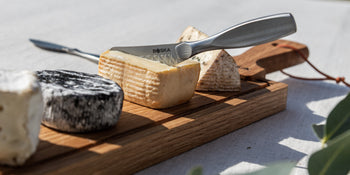Enjoy your serving board longer by following these tips!
Your serving board gets put through a lot: regular exposure to all kinds of foods and knives, extreme temperature differences, and getting soaked in water for cleaning. Whether your board is slate, wood, marble or ceramic, one thing is certain: with proper maintenance, you can enjoy it for years to come.
How can you keep your serving board in good condition for as long as possible? Consider the following tips.
Tip 1: Regularly treat it with board oil
Do you have a wooden or slate serving board? Be sure to treat it regularly with board oil. The oil creates a protective layer, protecting your serving board against cracks and stains. Our Board Oil is unscented, flavorless and made from natural ingredients: unlike artificial oil products, our oil poses no risk of ingestion of hazardous substances.
Do you have a new serving board? Soak it in board oil for three days. Once it dries, it's ready for use. After that, simply spray the board with oil once a month and wipe it down.

Tip 2: Wash your serving board by hand after use
Many serving boards are sensitive to heat and moisture. Cleaning wooden boards in the dishwasher can cause them to warp and can melt the glue holding the planks together. To keep your favorite serving board in good shape, be sure to wash it by hand. Rinse the board off with warm water and a small amount of dishwashing liquid. Don't leave it under the water for too long - it's better to expose the board to as little water as possible.
Tip 3: Do not use any abrasive cleaning methods
Never clean with a hard-bristle brush, abrasive materials, baking soda, disinfecting or corrosive cleaning agents. A little bit of water and soap is all you need to clean your board after use. Be sure to properly clean it with running water.
Tip 4: Stand your board up to let it dry
After cleaning and drying off your board, stand it upright to prevent it from warping. Avoid placing it near the stove so that the board will not be exposed to extremes in temperature.
Tip 5: Do not use your serving board as a cutting board
Tempting as it may be, do not use your serving board to slice bread, vegetables or any other foods. Sharp objects like knives damage the protective coating and create scratches and cracks. Cutting a slice of Brie or a chunk of Parmesan on the board to serve them is okay. For anything more heavy duty than that, be sure to use a cutting board.




















